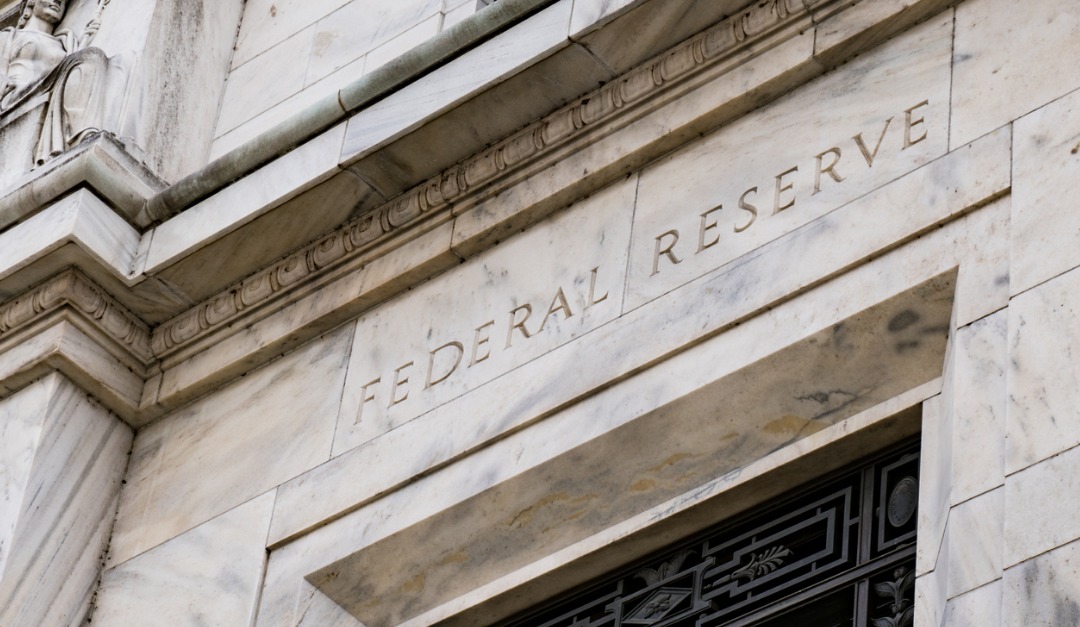On June 10, the Federal Reserve announced it would be maintaining the target range for the federal funds rate at 0 to 1/4 percent, meeting widespread expectations that the Fed would leave interest rates unchanged and near zero to help preserve the flow of credit in an economy significantly hit by the coronavirus pandemic.
The Fed predicts no interest-rate increases through 2022.
“The ongoing public health crisis will weigh heavily on economic activity, employment and inflation in the near term, and poses considerable risks to the economic outlook over the medium term,” said the FOMC statement. “The Committee expects to maintain this target range until it is confident that the economy has weathered recent events and is on track to achieve its maximum employment and price stability goals.”
To support the flow of credit, the Federal Reserve says it will continue to increase its holdings of Treasury securities and agency residential and commercial mortgage-backed securities, “at least at the current pace to sustain smooth market functioning.”
The Fed’s economic projections are less optimistic compared to the numbers predicted earlier this year. For example, the Fed previously predicted a 9.3 percent unemployment rate at the end of 2020, with the rate lowering to 5.5 percent in 2022. The Fed now expects the economy to shrink by 6.5 percent in 2020. In 2021 and 2022, however, the Fed expects 5 percent and 3.5 percent gains, respectively.
“The Committee will continue to monitor the implications of incoming information for the economic outlook, including information related to public health, as well as global developments and muted inflation pressures, and will use its tools and act as appropriate to support the economy,” continued the FOMC statement. “The Federal Reserve is committed to using its full range of tools to support the U.S. economy in this challenging time, thereby promoting its maximum employment and price stability goals.”
What does this mean for real estate? While Fed rates do not have a direct influence, mortgage interest rates will likely remain low or flat through the next few years. On June 4, Freddie Mac announced mortgage rates ticked up slightly, though they remain low YoY. The latest Primary Mortgage Market Survey® reported average 30-year fixed-rate mortgages at 3.18 percent (down 0.64 points YoY), with 15-year fixed-rate mortgages at 2.62 percent (down 0.66 points YoY) and the 5/1-year ARM at 3.1 percent (down 0.42 points YoY).
Some lenders, however, have stopped offering certain refinance and jumbo mortgage products as credit requirements tighten due to risks associated with CARES Act policies.
How the Industry Is Responding:
“The Federal Reserve’s view that a rate hike will not occur for three years is a signal to the market to expect an all-in accommodating monetary policy. It is also very likely that the Fed will be aggressively purchasing mortgage-backed securities behind the scenes. That means mortgage rates will be at or near 3 percent and near record lows for an extended time. Consumer price inflation is not an issue even with so much printing of money. It’s the right policy at the right time. If for an unexpected reason should inflation pop out, then mortgage rates will rise independent of the Fed as lenders need to compensate for the loss purchasing power of the dollar, which happened during the 1970s.” — Lawrence Yun, Chief Economist, National Association of REALTORS®
“The employment report for May showed a sharp turnaround from the stunningly-large job losses in April. However, employment remains 13 percent below where the labor market was in February. Today’s announcement from the Federal Reserve is aligned with this reading of the economy: We might be getting better—but we are still far away from full employment—with risks ahead from a second wave of the pandemic and huge economic uncertainties. Monetary policymakers will, therefore, keep rates low for years to ensure a full recovery.
“To help convince markets that they will keep rates at zero, even if the job market continues to improve, the Fed also reaffirmed its strong commitment to keep rates low until full employment returns. Matching MBA’s forecast, the FOMC’s projections suggest this means keeping rates at zero until at least 2022.
“In March, the Fed stepped in to purchase billions of MBS and Treasuries, and has cumulatively purchased more than $2 trillion since then, including more than $700 billion of MBS. While these purchases have slowed, the Fed continues to signal that they stand ready to step back into the market, if necessary, to reduce volatility. Today, they pledged to maintain their purchases at the current pace. With mortgage rates near record-lows, this support has enabled a robust rebound in purchase market activity and a sustained refinance wave—which is saving homeowners money that can be used to support other spending, thereby benefitting the broader economy.” — Mike Fratantoni, SVP and Chief Economist, Mortgage Bankers Association
As the coronavirus and its impact on the industry unfold, RISMedia is providing resources and updates. Get the latest.
 Liz Dominguez is RISMedia’s senior online editor. Email her your real estate news ideas to ldominguez@rismedia.com.
Liz Dominguez is RISMedia’s senior online editor. Email her your real estate news ideas to ldominguez@rismedia.com.











